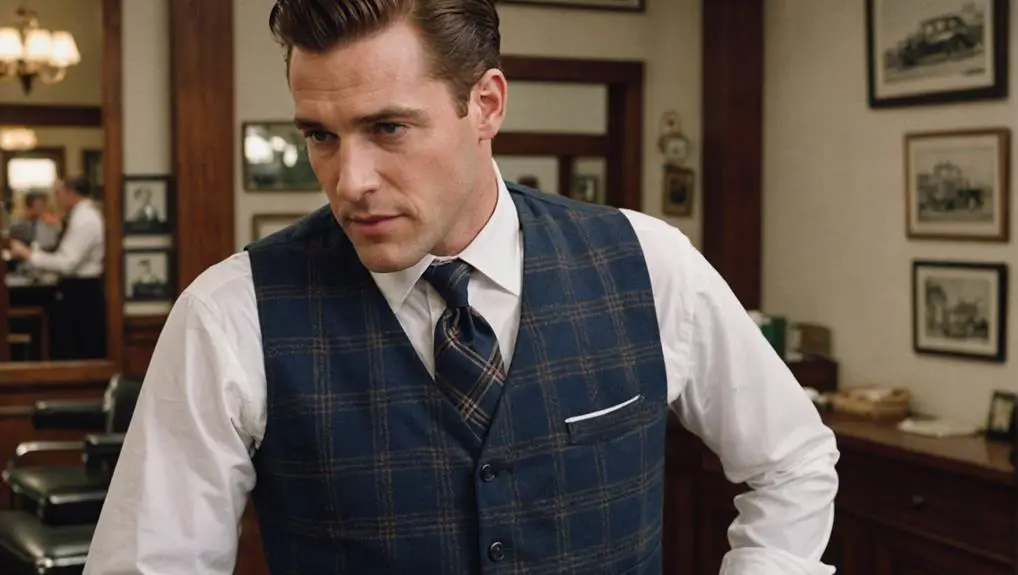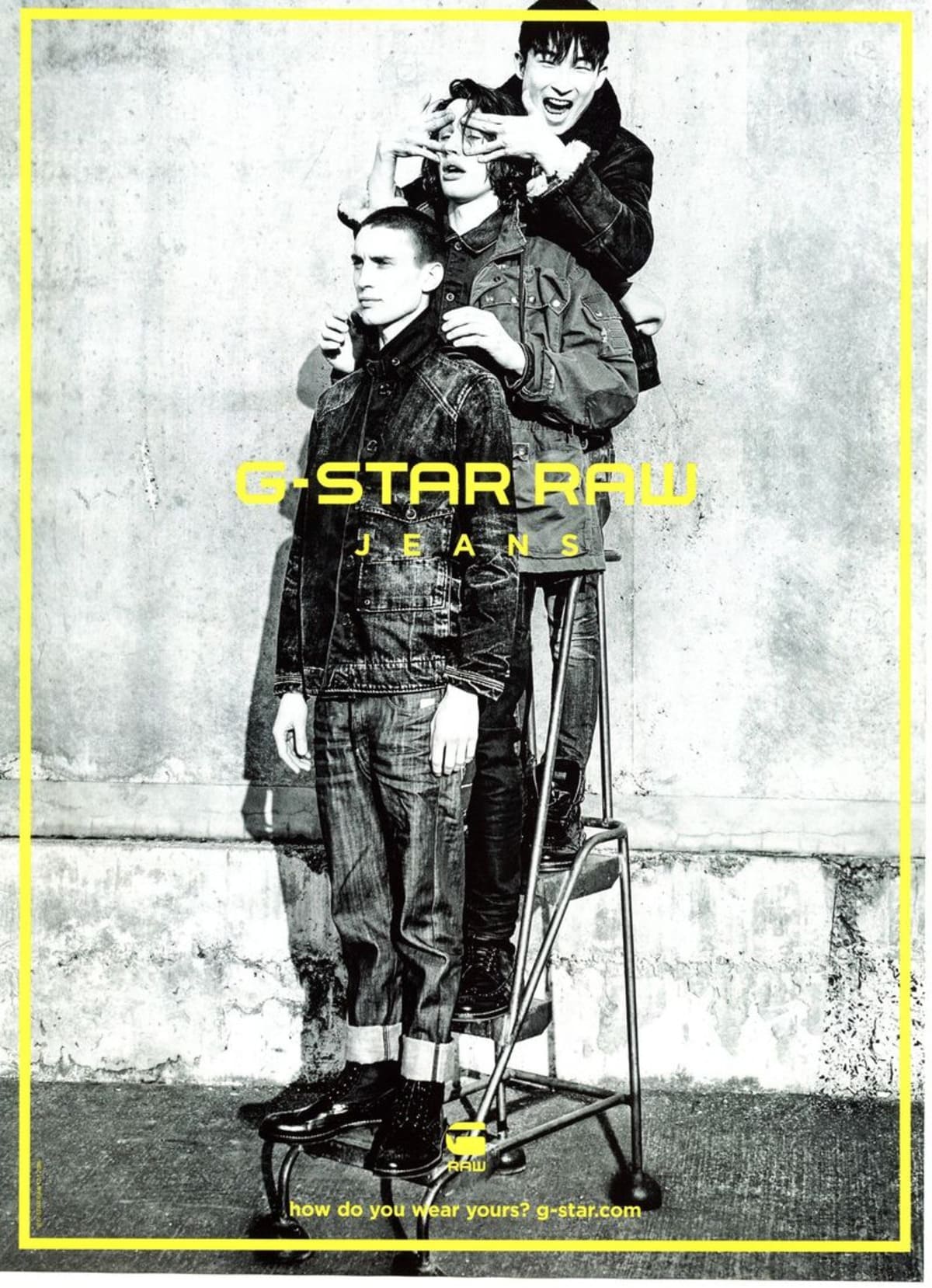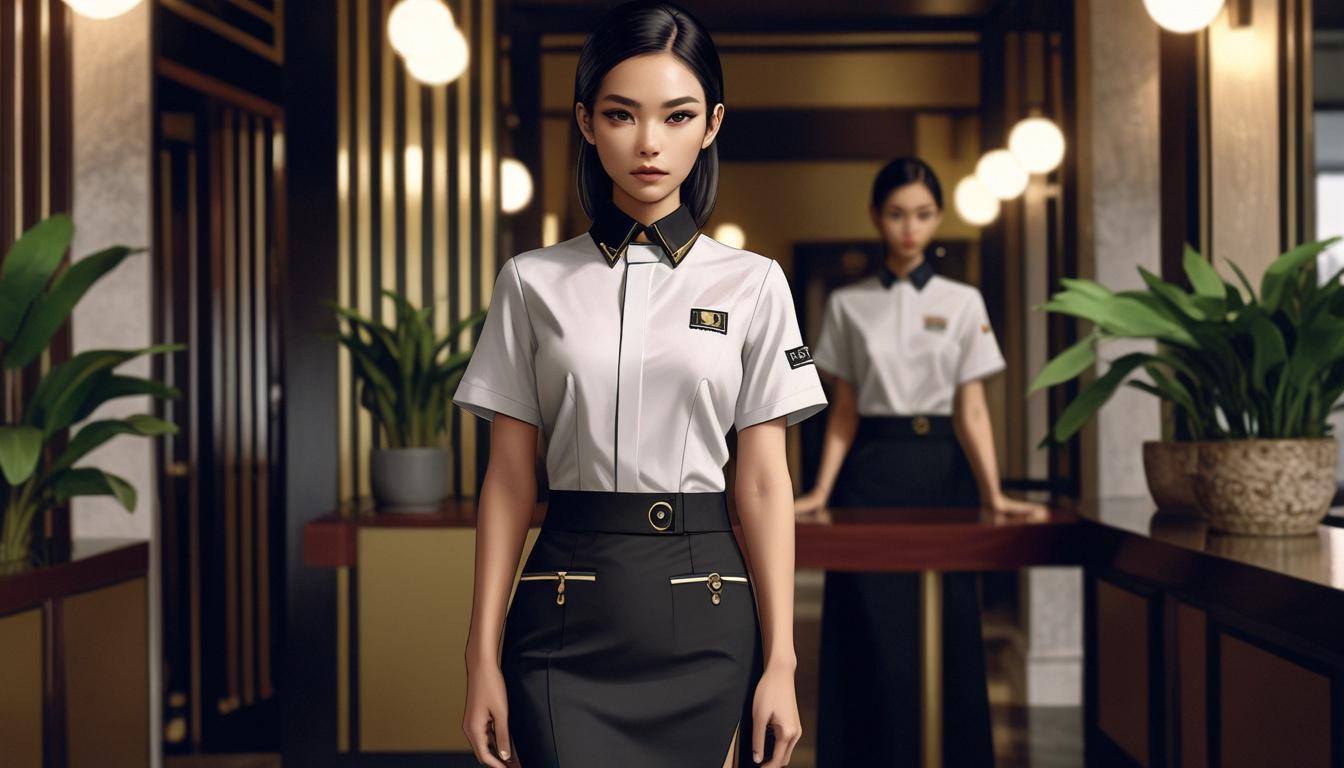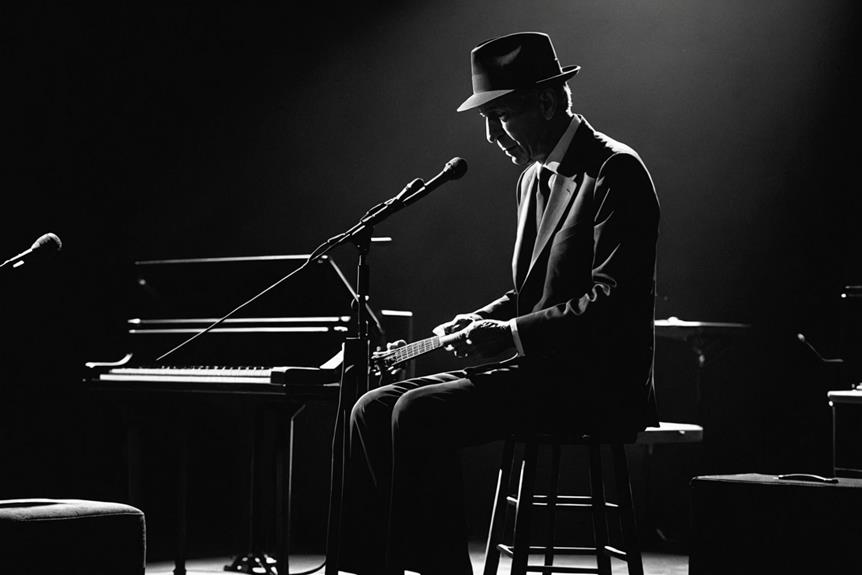In the 1950s, men's waistcoats evolved from traditional double-breasted to sleek single-breasted designs, reflecting a newfound emphasis on tailored elegance. You'll notice a variety of patterns, such as houndstooth and pinstripes, often crafted from high-quality fabrics like wool, tweed, and even cotton for everyday wear. These waistcoats played a vital role in both formal and casual attire, pairing seamlessly with three-piece suits or relaxed sport coats. Accessories like contrasting vests and pocket squares offered further opportunities for personal expression. This blending of style and individuality really captures the spirit of the era, revealing even more insights as you explore further.
Evolution of Waistcoat Styles
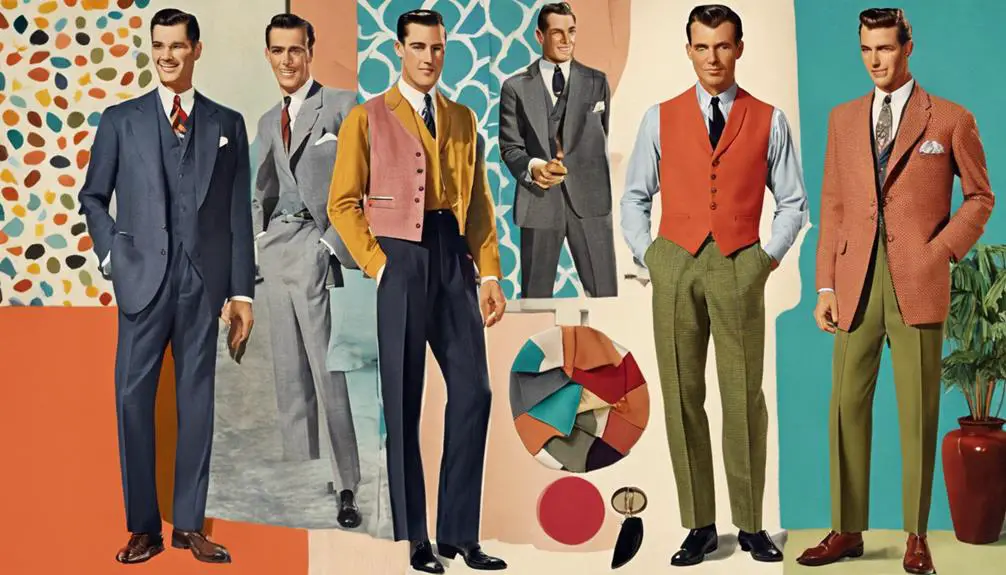
The 1950s marked a significant turning point in men's waistcoat styles, reflecting the decade's dynamic fashion evolution. You'll notice how the double-breasted designs of the 1940s gradually evolved into more tailored single-breasted options, perfectly complementing the broader shoulders of contemporary suit silhouettes. This shift not only represented a change in aesthetics but also catered to the growing preference for streamlined sophistication.
Patterns like houndstooth, checks, and pinstripes became increasingly popular, showcasing the era's bold and vibrant approach to menswear. The wool blend fabrics used in these waistcoats varied in color, with traditional grays and browns coexisting alongside bolder hues, mirroring the burgeoning consumerism and desire for self-expression that defined the decade.
Materials and Fabrics Used
As waistcoat styles evolved in the 1950s, so too did the materials that defined them. You'd find that men's waistcoats were often crafted from high-quality fabrics like wool and tweed, emphasizing both durability and style. Cotton also made its way into everyday wear, catering to a broader audience. The introduction of synthetic fibers, particularly polyester, allowed for lighter, more affordable options without sacrificing too much on style.
Patterns played an essential role in this era, with herringbone, checks, and stripes enhancing the visual appeal of these mens vests. Many waistcoats featured luxurious linings made from silk or acetate, adding comfort and sophistication.
Here's a quick overview of the materials used:
| Material | Characteristics | Common Patterns |
|---|---|---|
| Wool | Durable, warm | Herringbone, Stripes |
| Tweed | Textured, rugged | Checks, Plaids |
| Cotton | Lightweight, breathable | Solid Colors, Stripes |
| Polyester | Affordable, easy-care | Bold Prints |
| Silk/Acetate | Soft, luxurious lining | N/A |
This shift in materials marked a vibrant departure from previous decades, aligning with the bold fashion trends of the 1950s.
Waistcoats in Formal Settings
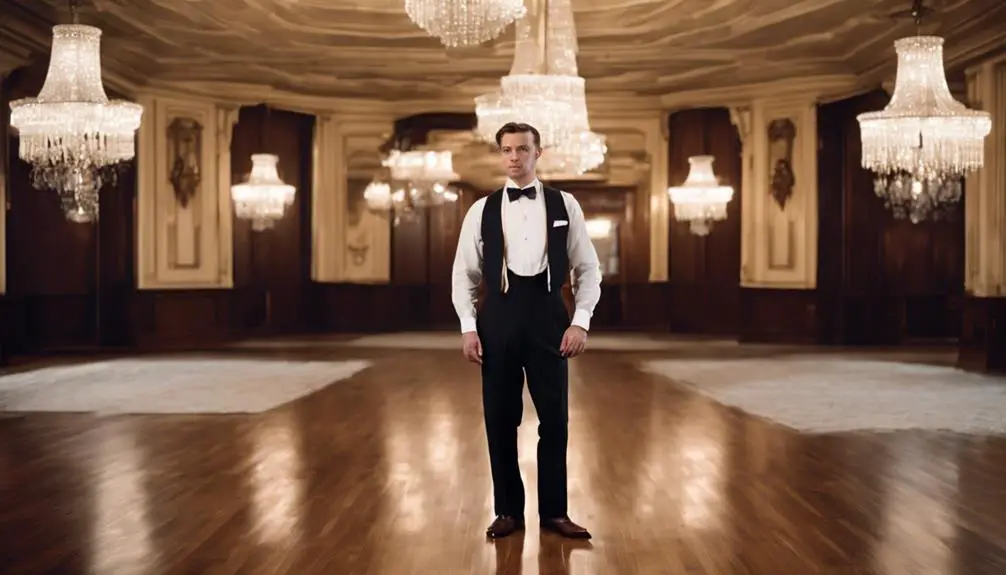
Waistcoats served as a cornerstone of formal menswear in the 1950s, seamlessly integrating elegance and sophistication into the three-piece suit ensemble. Typically crafted from luxurious materials like Wool Tweed, these waistcoats elevated your attire, showcasing a tailored fit that accentuated your physique. The six-button designs, ranging from single-breasted to double-breasted, added an element of refinement, hinting at your attention to detail. Additionally, vintage clothing labels from this era often reflected the craftsmanship and quality that defined the decade, making each piece a unique representation of style and history. Vintage clothing characteristics were essential in distinguishing genuine pieces from modern reproductions.
In formal settings, the waistcoat was more than just a garment; it was a statement of individual style. You often coordinated accessories like pocket squares and ties to create a polished appearance that stood out at events. The subtle patterns or solid colors of the waistcoat worked harmoniously with the matching trousers and blazer, enhancing the overall sophistication of your look.
As the decade progressed, you'd notice a shift towards bolder colors and patterns, reflecting a cultural embrace of personal flair in formal attire. This evolution in waistcoat design not only marked a change in fashion but also mirrored the growing confidence of men to express themselves through their clothing, making the waistcoat an enduring symbol of style in the 1950s.
Casual Waistcoat Trends
While formal waistcoats defined elegance in the 1950s, casual waistcoat trends began to emerge, reflecting a shift toward relaxed yet stylish attire. You'll notice that casual waistcoats, often made from lighter fabrics, became popular with bold patterns and colors. These vests allowed men to express their style while enjoying comfort.
Casual waistcoats paired seamlessly with outfits like t-shirts and sport coats, giving you the versatility to dress up or down. Vintage designs showcased unique textures and patterns like checks, houndstooth, and paisley, enhancing personal expression. Worn as part of a layered look, these waistcoats contributed to a polished yet approachable appearance during social events.
Here's a quick overview of casual waistcoat features:
| Feature | Description |
|---|---|
| Fabric | Lighter materials for comfort |
| Patterns | Bold designs like paisley, checks |
| Functionality | Pockets for practicality |
| Versatility | Paired with casual wear |
| Occasions | Ideal for social gatherings |
Accessories Complementing Waistcoats
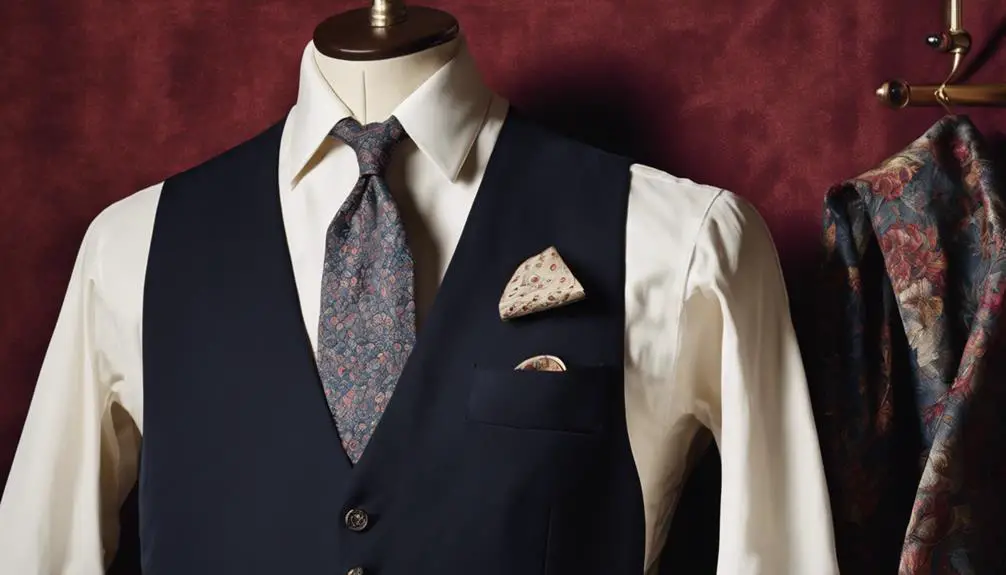
Accessories play an essential role in enhancing the overall appeal of waistcoats in the 1950s. For young men, the use of a contrasting vest in vibrant colors often made a striking statement against the understated tones of a wool waistcoat. These combinations allowed for personal expression, showcasing individuality in a time when fashion was increasingly about making a statement.
Belts gained popularity over suspenders, with woven leather options adding both functionality and flair. Pocket squares emerged as a must-have accessory, providing a pop of color and pattern that could elevate even the simplest ensemble. Scarves, typically crafted from silk or wool, were not only practical for warmth but also offered a stylish touch, complementing the lapel collar of the waistcoat.
Hats, like fedoras and flat caps, rounded out the look, contributing to a polished appearance. The colorful hatbands became a canvas for personal style. Finally, classic footwear choices, such as Oxfords and brogues, were essential, while blue suede shoes—popularized by icons like Elvis—added a fashionable edge. Together, these accessories transformed waistcoats into symbols of sophistication and individuality for young men in the 1950s.
Frequently Asked Questions
When Did Men Start Wearing Waistcoats?
Men started wearing waistcoats in the 17th century, evolving through the 18th and 19th centuries. You'll notice how they shifted from formal attire to versatile pieces, reflecting social changes and personal expression over time.
Why Did Men Stop Wearing Waistcoats?
Men stopped wearing waistcoats primarily due to shifting fashion trends, economic changes promoting casual attire, and influences from youth culture. As comfort and practicality gained importance, traditional formal styles became less relevant in everyday life.
What Type of Clothing Was Popular for Men in the 1950s?
In the 1950s, you'd notice a blend of casual and formal styles. T-shirts, leisure jackets, and American sack suits dominated, while vibrant patterns in vests reflected individuality, marking a significant shift in men's fashion trends.
What Did Suits Look Like in the 1950s?
In the 1950s, suits featured a straight cut with lower buttoning points, emphasizing comfort. You'd notice conservative colors dominating, while narrower lapels and refined tailoring emerged, reflecting a shift towards elegance and personal expression in style.
